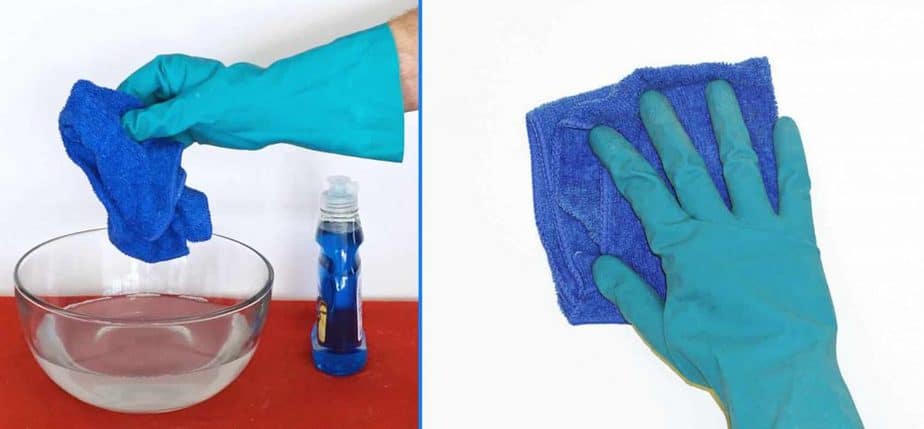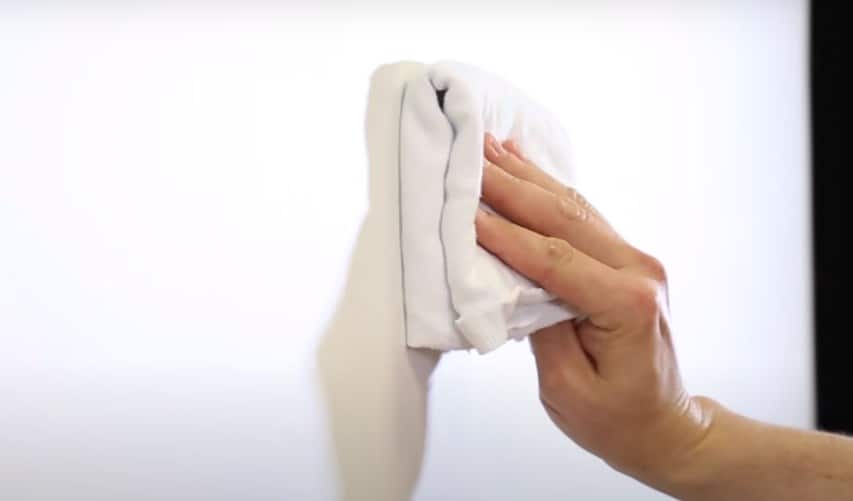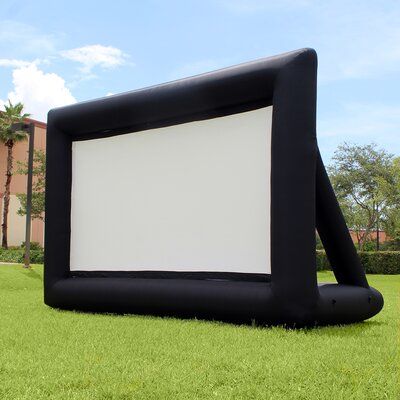Although the video projector will require very little maintenance, it is important to maintain it for the highest performance you can get, especially in regards to the lenses. It doesn’t matter whether you own an LCD or DLP or LCoS projector.
In the end, each lens is prone to dust or dirt which is why you need to get it cleaned up to maintain the integrity of what you’re viewing as clear and clean as you can. This is also true of any projector screen.
The more soiled your projector screen is the harder it is to view even 4K images at the highest brightness and also with no ambient light ruining the contrast of your screen.
So How To Clean Projector Screen properly?

In the majority of instances, cleaning off streaks or smudges from the projector screen will require you to possess:
- A bowl
- Lint-free microfiber or cotton cloths
- An assortment of latex gloves
- Dish soap
- Isopropyl alcohol
- Cotton Swabs
- Masking tape
Sometimes a solution of water or dish soap solution will not suffice. In this situation, you’ll need:
- Canned air
- All-purpose surface cleaner
- Foam brushes
- Large pencil erasers
1. Begin with dirt that is simple to wash
One thing you should keep in mind when handling projector screens is always to make sure you wear latex gloves. Wearing your hands naked could leave fingerprints and dirt upon the reflective surface, making it more difficult to keep clean than it currently is.
For the initial cleaning process, get your dry microfiber cloth or compressed air. Utilizing the clean microfiber cloth gently wipe the screen in either a down or up, or left or right direction in short sections.
It is vital to keep in mind not wiping the projector screen in circular motion is not a good idea. The reason for this is it is because circular wiping can damage the screen material.
In the meantime, if you’d prefer to use compressed air to remove and loosen dust particles, make sure that you only use short bursts. In addition, you must make sure to keep your spray nozzle at least one centimeter away from the filter.
After that, make sure you can see that the entire screen has no dust particles remaining. However, if you feel you’ll need to clean it more thoroughly, you’ll use masking tape.
2. Take off all dust particles stuck to your screen.
Examine if there are dust particles stuck on your projection screen. If you notice any dust particles, cover the middle of your palm using masking tape with the adhesive side facing the outside.
You can also make use of a foam brush with masking tape tied around it.
Rub the tape onto the dirt, then stick it to your screen and then see if it can adhere to the tape. Be sure you are sure that your masking tape is not touching the screen surface to ensure that there aren’t any damaged areas.

3. Use a moist microfiber cloth for smudges that are difficult to get rid of.
Certain dirt can be difficult to eliminate. Cleaning oil smudges, for example, requires the use of a damp cloth and cleaning solution.
Fill your bowl with it up with warm water. Then, add a tiny portion of dish soap. The mixture should be around five percent dish soap and 95 percent water.
Additionally, you could make use of a Surface cleaning solution. However, you should not apply it directly to your projector screen.
If you want to use an effective Surface cleaning solution, you need to dilute it before using it. After you are sure that the cleaning solution is ready, take your microfiber or cotton microfiber cloth and dip it into it. After that, wipe the smudges onto the screen of your projector screen with light pressure.
Always clean the screen with an upward or down or left or right direction to avoid damaging the screen projector screen.
Furthermore, you have to ensure that water doesn’t collect on or flow across the screen. When it is, it’ll create a permanent stain that can negatively impact the resolution of the projected images.
If that occurs, take a dry, lint-free cotton or microfiber cloth and dab it onto the water that ran through the screen.
4. Clean your projector screen
After you have cleaned your projector screen with a damp cloth The next step you have to do is rub it dry. Take a clean and dry cloth and gently wipe the screen dry in an upward or downward, or right and dry movement.
Once the screen is dry, you can check whether you’ve been successful in removing all dirt. If not, there’s another method you could try.

5. Utilize cotton swabs and alcohol to get rid of the dirt
One end of your cotton swab to your isopropyl alcohol. Don’t dry the other side in the same way you intend to utilize this to dry off the area you scrubbed.
Locate the area in which there is a speck of dirt and gently apply the wet end of the cotton swab onto it. Clean the area with only the dry part of the cotton swab. Make sure not to leave the area too wet because alcohol may cause a stain on your projector screen permanently.
After completing all the cleaning steps After all of the cleaning procedures, the projector screen should be free from dust accumulation of dirt and streaks of smudges. It is also possible to follow the same procedure when you find any remaining staining on the screen.
How Do You Clean an Inflatable Projector Screen?

You can refill your inflatable projector screen with an integrated air pump. Ideal for larger spaces inflatable screens are durable and durable, they can endure a variety of weather conditions.
Due to their capacity to endure the elements, you can clean your inflatable screens more efficiently. It is possible to deflate them and throw them into the washer. Utilizing the washing machine should be the last option.
In the majority of instances, wiping the screen clean with a sponge before starting the projection should suffice. If that does not remove the popcorn residue and dirty fingerprints. You can try the methods of cleaning mentioned above.
Do Not Keep the Screen “Outdoors”
As absurd as it might appear outdoor projector screens are not designed to be placed outside for an indefinite period. When you’re finished with the project the screen, it’s best to move towards the indoors.
If it is placed outdoors for a long time the screen is at the mercy of nature and its elements, including sun, snow, rain, or wind.
- If a screen is not properly installed, it may be robbed or wind can cause it to fall and then cause it to fall away.
- The sun’s UV rays can reduce a permanently set up screen’s performance significantly, affecting your experience of watching.
- The effects of moisture or water on the projector screen, result in mildew, mold, and oxidation issues.
The harm caused by rain, sun, and wind combined would result in the result of a projector screen that develops tears wears away or completely cracks.
Place the Screen in the Shade
If bringing the outdoor screens indoors isn’t possible, make sure the screen is installed securely. That is, fix it properly, use strong cords and stakes should be fixed in a way that wind and breeze could cause the screen to shake.
Keep the screen shaded and out of direct contact with sunlight or rain. Moving it to a shade or the patio etc. can help protect the screen while keeping it out of direct sunlight.
If you are unable to immediately move your projector screen inside, placing it in an open area is far better than leaving it completely outside.
Don’t Swaddle a Wet Screen
The retractable projector screens should be rolled out only when in use. At other times, you should you can roll them up. However, don’t take the screen off in a fresh state after a wash. A damp screen can cause mildew and mold.
If you can’t keep from rolling up a wet and moist screen, take it off the screen that is wet as quickly as you can do so. Dry it. Repack it only after it’s dried out.
How Often Should You Clean a Projector Screen?
The majority of premium projectors don’t need to be cleaned often. Therefore, it shouldn’t be a consideration when deciding on the projector screen to buy.
Screens of the highest quality are designed so that they are as seamless as they can so that they can provide the most ideal surface for projection. This stops the majority of dirt and dust from adhering to the surface of your screen. It’s generally recommended that you clean your screen at least every three months or whenever it is possible to notice dust on the surface. Additional thorough cleaning can be carried out once a year, but only when it is necessary.
Projector screen upkeep is essential to make sure that the projector image remains crystal-clear. A lot of projector owners are focused on cleaning their beamers regularly but do not think about the display surface. If you are mindful of cleaning your projector screen it will offer amazing visuals for a long time to follow.
Final Words
Screen maintenance for your projector is essential for ensuring that your projector image remains crystal-clear. Whatever your screen type, you can utilize various household products like cleaners to clean your screens. The main goal is to get rid of dirt and marks without damaging the screen’s paint that is known to reflect light and accurately display the image on your projector in a manner that resembles TV clarity. Take attention to your screens in the like you would keep your home clean or sweep the floor until it’s free of dust.
The majority of owners of projectors tend to overlook the screen, even when they frequently wipe their lens and wash the projector’s filters. It’s not a good idea to do this. The screen can break if it’s left to clean or is cleaned in a hurry. Cleaning is usually just a matter of cleaning the screen to ensure you have a clean screen to project your image on. Be sure to follow the directions of the screen’s manufacturer regardless of whether they’re mentioned in this guide. Most of the time, these manuals will inform you of the harsh chemicals you shouldn’t use on your screen.
